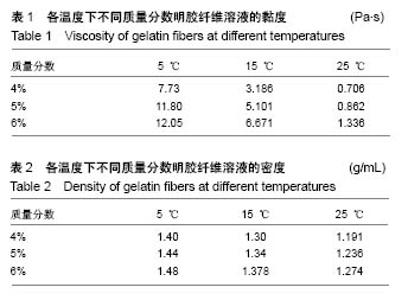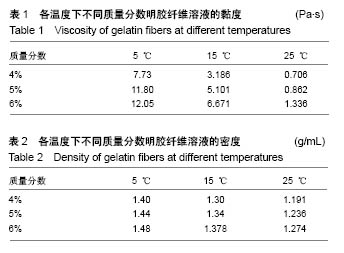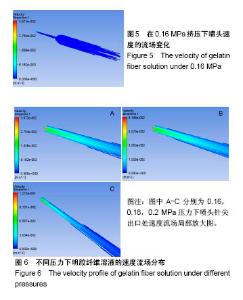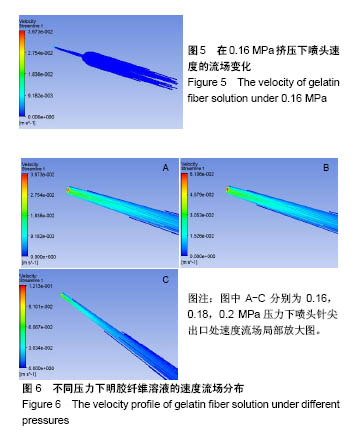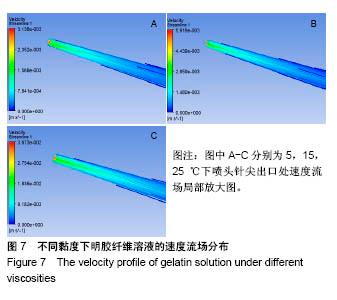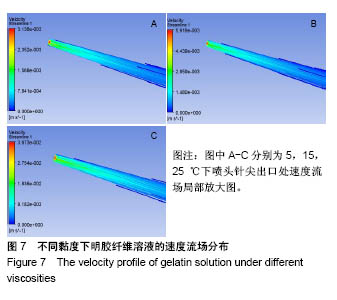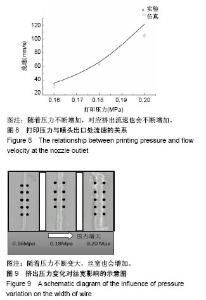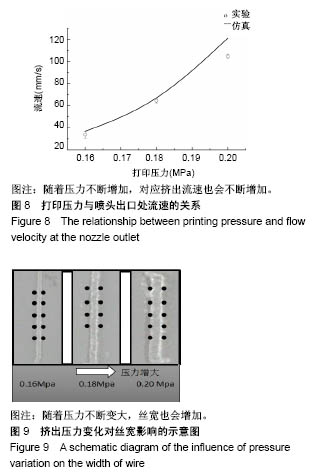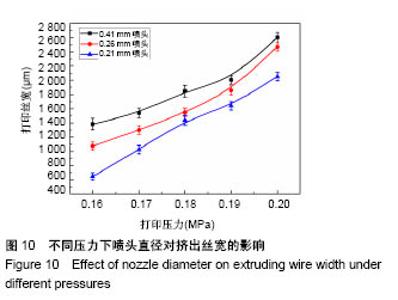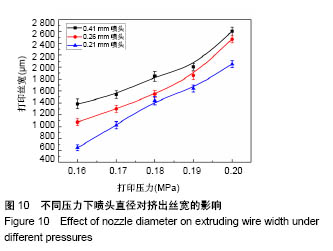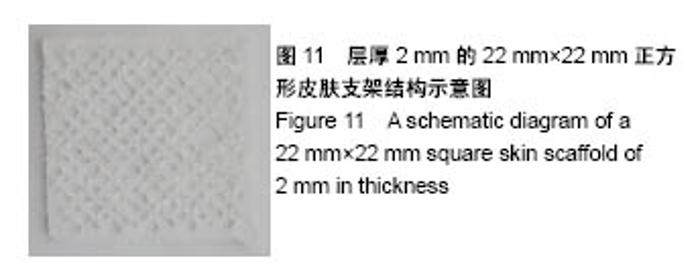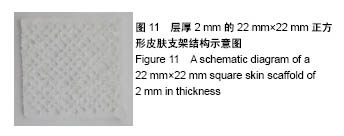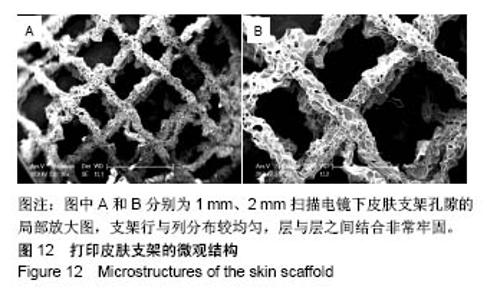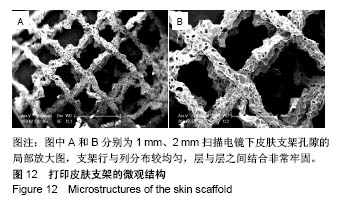| [1] 何雪峰,熊爱兵.3D打印技术在整形外科的研究及应用进展[J].中国组织工程研究,2017,21(3):428-432.[2] 汤永喆.微粒皮结合人工真皮构建组织工程皮肤修复创面的初步研究[D].上海:复旦大学,2010.[3] 郝文丽,张平,吴训伟.组织工程皮肤的现状和展望[J].北京生物医学工程,2016,35(1):94-99.[4] 金嘉长,王扬,马维虎,等.3D生物打印技术在组织工程支架构建与再生中的应用进展[J].航天医学与医学工程, 2016,29(6): 462-468.[5] 罗文峰,杨雪香,敖宁建.生物医用材料的3D打印技术与发展[J].材料导报,2016,30(13):81-86.[6] 石静,钟玉敏.组织工程中3D生物打印技术的应用[J].中国组织工程研究,2014,18(2):271-276.[7] 胡锦花.生物3D打印多层皮肤组织模型的研究[D].杭州:杭州电子科技大学,2017:1-54.[8] 史建峰,王涵,王迎,等.3D生物打印技术的发展与应用[J].医疗装备,2017,30(17):202-204.[9] 王璐,胡为杰,聂昊,等.3D打印与组织工程心肌、心脏瓣膜、大血管及血管网的构建[J].中国组织工程研究, 2015,19(43): 7029-7034.[10] 房瑞,许零,陈欣,等.组织工程皮肤支架材料和种子细胞的研究进展[J].中国组织工程研究与临床康复,2009,13(47):9329-9333.[11] 顾奇,郝捷,陆阳杰,等.GordonG.Wallace,周周琪.生物三维打印的研究进展[J].中国科学:生命科学,2015,45(5):439-449.[12] 杨润怀,陈月明,马长望,等.生物物细胞三维打印技术与材料研究进展[J].生物医学工程学杂志,2017,34(2):320-324.[13] 孟炯.满足个性化需求的3D打印定制模式创新——兼论实现个性化定制模式的商业化策略[J].科技进步与对策, 2016,33(15): 22-29.[14] Boland T,Xu T,Damon B,et al.Application of Inkjet Printing to Tissue Engineering.Biotechnol J. 2006;1(9):910.[15] Xu T,Gregory CA,Molnar P,et al.Viability and electrophysiology of neural cell structures generated by the inkjet printing method.Biomaterials.2006;27(19):3580-3588.[16] Khalil S,Nam J,Sun W.Multi‐nozzle deposition for construction of 3D biopolymer tissue scscaffolds.Rapid Prototyping J.2005;11(1):9-17.[17] Michael S,Sorg H,Peck CT,et al.Tissue Engineered Skin Substitutes Created by Laser-Assisted Bioprinting Form Skin-Like Structures in the Dorsal Skin Fold Chamber in Mice.Plos One.2013; 8(3):e57741.[18] 任荣,张剑飞,司家文,等.海藻酸钠/明胶复合水凝胶用于3D生物打印的初步研究[J].中国口腔颌面外科杂志, 2017,15(5): 402-407.[19] Defraeye T,Blocken B,Carmeliet J.CFD analysis of convective heat transfer at the surfaces of a cube immersed in a turbulent boundary layer.Int J Heat Mass Transfer. 2010;53 (1-3):297-308. [20] 刘露露,盛永林,童李.基于Fluent自进式旋转射流喷头的数值模拟[J].煤矿机电,2010,31(5):4-5[21] 田琦,檀盼龙.T型微通道内流体流动的FLFLUENT模拟[J].云南化工,2017,44(7):57-59. [22] 任翀,闫恪涛,范丽荣.基于FLUENT模拟的熔融沉积快速成型喷头工艺参数研究[J].铸造技术,2017,38(6):1406-1409. [23] 廉慧珍,李玉琳.关于体积法计算混凝土配合比中原材料密度的问题[J].混凝土,2010,25(9):1-3.[24] 杨倩倩.分离流量法的非牛顿流体润滑理论、计算与实验研究[D].广州:华南理工大学,2016.[25] 于洋,宗光华,丁凤林.超声波流量测量中流速计算方法的对比[J].北京航空航天大学学报,2013,39(1):37-41.[26] 王康建,曾睿,但卫华,等.基于天然高分子材料的组织工程化皮肤支架材料[J].生物医学工程与临床,2009, 13(2):161-166.[27] 张杨,李秀兰,师宜健.含有生肌液的明胶-壳聚糖皮肤支架的生物学特性研究[J].生物医学工程与临床, 2007,11(2):97-101.[28] 牛金柱,李丽华,李富文,等.利多卡因明胶纤维止血止痛敷料的研制及临床应用[J].中国医药导报,2008,5(6):97.[29] 杨宇,仇雄文,郑清健,等.应用带硅胶膜的植入式真皮再生支架修复耳廓的中小面积皮肤缺损[J].中国医疗美容,2017,7(4):17-20.[30] 王克敏,李世荣,郭嘉.热致相分离技术制备组织工程支架[J].化学与生物工程,2006,23(1):1-3.[31] 师奇松,于建香,顾克壮,等.静电纺丝技术及其应用[J].化学世界, 2005,46(5):313-316.[32] 廖俊琳,王少华,陈佳,等.3D生物打印在组织工程软骨再生与重建应用中的研究进展[J].中南大学学报(医学版), 2017,42(2): 221-225.[33] 陈绍军,叶旋,钟燕辉.3D打印技术在生物医用高分子材料制备领域的应用进展[J].广东化工, 2018,45(4):123-124.[34] 李大为,何进,何凤利,等.丝素蛋白/壳聚糖复合材料在组织工程中应用的研究进展[J].中国生物工程杂志, 2017,37(10): 111-117.[35] 牛金柱,牛金亮,刘宿,等.明胶纤维网粘附性及生物吸收性的实验研究[J].解放军医药杂志,2001,13(1):8-9.[36] 关嫚,任磊,吴婷,等.新型双层皮肤组织工程支架的构建[J].厦门大学学报(自然科学版),2006,45(3):379-382. |
